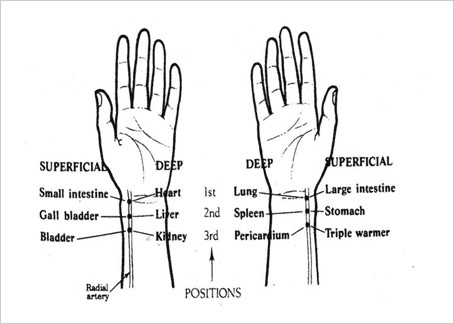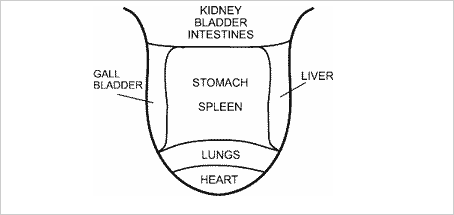Acupuncture
What is Acupuncture?
Acupuncture is a system of healing which has been practised in China and other Eastern countries for thousands of years. Although often described as a means of pain relief, it is in fact used to treat people with a wide range of illnesses. Its focus is on improving the overall well being of the patient, rather than the isolated treatment of specific symptoms. According to traditional Chinese philosophy, our health is dependent on the body’s motivating energy – known as Qi – moving in a smooth and balanced way through a series of meridians (channels) beneath the skin.
Qi consists of equal and opposite qualities – Yin and Yang – and when these become unbalanced, illness may result. By inserting fine needles into the channels of energy, an acupuncturist can stimulate the body’s own healing response and help restore its natural balance. The flow of Qi can be disturbed by a number of factors. These include emotional states such as anxiety, stress, anger, fear or grief, poor nutrition, weather conditions, hereditary factors, infections, poisons and trauma. The principal aim of acupuncture in treating the whole person is to recover the equilibrium between the physical, emotional and spiritual aspects of the individual.
Acupuncture is a system of of medicine where fine needles are inserted under the skin in order to treat a problem or disease. This is a relatively painless and gently form of medicine and is carried out by sterile procedure. Disposable needles are used. There are no side effects, no drugs are used and nothing is injected under the skin. The needles are very fine only 0.16mm the thickness of a strand of hair.
Acupuncture can help with:
(As defined by the World Health Organisation in 1981)
- Headaches
- Migraine
- Menieres disease
- Trigeminal Neuralgia
- Pareses following stroke
- Peripheral Neuropathies
- Frozen shoulder
- Tennis elbow
- Sciatica
- Low back pain
- Osteo arthritis
- Sequelae of poliomyelitis
- Neurogenic cladder dysfunction
- Nocturnal enuresis
- Intercostal neuralgia
- M.E (Myalgic Encephlomyelitis
- Facial Palsey (within 3-6 months)
- Cervicobrachial syndrome
- Spasms of oesophagus & cardia
- Hiccough Gastroposis
- Acute & chronic gastritis
- Gastric hyperacidity
- Acute & chronic colitis
- Constipation
- Diarrhoea
- Paralytic ileus
- Chronic duodenal ulcer (pain relief)
- Acute duodenal ulcer (without constipation)
- Acute bacillary dysentery
- Bronchial asthma
- Acute bronchitis
- Toothache
- Post extraction pain
- Gingivitis
- Acute & Chronic pharyngitis
- Common cold
- Acute Rhinitis
- Acute Sinusitis
- Acute Tonsillitis
- Central Retinitis
- Cataract (without complications)
- Myopia (in children)
What is Qi?
Qi is unknown in Western medicine, but in simple terms it is the vital energy of the body. It keep the blood circulating, warms the body and fights disease. It is Qi that distinguishes living creatures from inanimate objects.
Qi flows through certain channels forming a network within the entire body and linking all parts and function together so that they work as one unit. There are 12 main channels, each connected to an internal organ and named after that organ.
When a person is healthy the Qi moves smoothly through the channels, but if for some reason the flow is blocked or too weak or too strong then illness occurs. The aim of the acupuncturist is to correct the flow of Qi by inserting thin needles into particular points on the channels and so affect a change in a part, or function of the body.
Changes in Qi precede physical change, so acupuncture can act as preventive medicine, correcting the energy before serious illness can occur. If physical change has already occurred, it can be reversed by adjusting the Qi.
Treatment FAQs
Who has Acupuncture?
Many people come to acupuncture for help with specific symptoms or conditions. These might include anxiety states, arthritis, asthma, back pain, circulatory problems, depression, facial paralysis, fibrositis, high blood pressure, indeterminate aches and pains, infertility, menstrual problems, migraines, rheumatism, sciatica, skin conditions or ulcers.
Acupuncture is a safe treatment for all. It has proved to be effective in pregnany management and for the relief of pain in childbirth. Acupuncture is also helpful for people trying to overcome addictions such as those related to smoking, alcohol, food or drugs.
Some people may have acupuncture as a preventive measure to strengthen their constitiution, or because they feel unwell in themselves without being “ill”in the Western sense. It can also be used alongside conventional medicine in the treatment of both acute and chronic disease. As with any therapy, the response to acupuncture can vary from one person to another.
What does Acupuncture feel like?
Most people’s experience of needles is of those used in injections and blood tests. Acupuncture needles bear little resemblance to these. They are much finer and are solid rather than hollow. When the needle is inserted, the sensation is often described as a tingling or dull ache. Needles are inserted either for a second or two, or may be left in place for 30 minutes or more, depending on the effect required. During treatment, patients commonly experience a heaviness in the limbs or a pleasant feeling of relaxation.
The benefits of acupuncture frequently include more than just relief from a particular condition. Many people find that it can also lead to increased energy levels, better appetite and sleep as well as an enhanced sense of overall well being.
How does an acupuncturist make a diagnosis?
In determining the pattern of disharmony, the acupuncturist needs a detailed understanding of the patient’s lifestyle, diet, work, medical history, emotional states, etc.
The diagnosis can include discussion, observation and examination. What the physician is looking for is not symptoms in isolation, but rather how they build up to form a whole picture.


How does treatment differ to western medicine?
Western medicine and Chinese medicine approach disease in fundamentally different ways. Western medicine looks for an external cause or agent of a specific disease which it isolates and control or destroys with drugs or surgery.
Chinese medicine takes into account not only the disease symptoms but also the age, habits, physical and emotional traits and all other aspects of the individual. It then attempts to put together an overall picture of the patient in order to evaluate any patterns of disharmony that have arisen.
Some people may have acupuncture as a preventive measure to strengthen their constitution, or because they feel unwell in themselves without being “ill”in the Western sense. It can also be used alongside conventional medicine in the treatment of both acute and chronic disease. As with any therapy, the response to acupuncture can vary from one person to another.
What will happen on my first visit?
Your first consultation may be longer than subsequent sessions. The acupuncturist needs to assess your general state of health, in order to identify the underlying pattern of disharmony and give you the most effective treatment.
You will be asked about your current symptoms and what treatment you have received so far, your medical history and that of your close family, your diet, digestive system, sleeping patterns and emotional state. To discover how the energies are flowing in your body, the acupuncturist is likely to feel your pulses on both wrists, noting their quality, rhythm and strength. The structure, colour and coating of your tongue also gives a good guide to your physical health.
Once enough information has been gathered to determine the likely causes of your problems, the acupuncturist can select the most appropriate treatment. The aim is to discover which energy channels need adjusting for your specific complaint to improve, and which require treatment to boost your overall energy and vitality.
Loose, comfortable clothing should be worn, and you should be aware that the acupuncturist may need to access points on your torso as well as on your arms and legs. Stimulation of specific areas on or beneath the skin affects the functioning of certain organs in the body. However, those areas may not be close to the part of the body where the problem is experienced. For example, although you may suffer from headaches, needles may be inserted in your foot or hand.
There are around 500 such acupuncture points on the body, and a properly trained and experienced acupuncturist will use a selection of perhaps ten or twelve of these for each treatment. It is quite usual that, during a course of treatment, different points will be selected as the patients condition changes.
The acupuncturist may supplement the needle treatment with moxa, a smouldering herb which is used to warm acupuncture points to encourage the body’s energy to flow smoothly.
Other methods of stimulating acupuncture points include using lasers or electro-acupuncture. Massage, or tapping with a rounded probe, are techniques particularly suitable for small children or for people with a fear of needles.
How often will I need treatment?
In traditional acupuncture philosophy each person is considered as unique, and therefore the number of treatmnets required depends on the individual. Some change is usually felt after five treatment. Normally you are recommended to visit your acupuncturist once or twice a week at first, although some conditions may need less frequent attention.
Sometimes the effects of the treatment are dramatic, and only one or two treatment are required. With other patients, the efffect are more subtle and they may need treatment over several months.
Is Acupuncture safe?
All members of the British Acupuncture Council (BAcC) must observe the Code of Safe Practice which defines the hygiene and safety standards relating to the practice of acupuncture. The Code of Safe Practice is available for download from the News & Information section of this site. These procedures have been approved by the Department of Health, and provide protection against the transmission of infectious diseases.
Patients who have been treated by a BAcC member are eligible to donate blood through the National Blood Service.
How can I find a qualified acupuncturist?
Members of the British Acupuncture Council (BAcC) have completed a thorough training of at least three years in traditional acupuncture and bio medical sciences appropriate to the practice of acupuncture. They carry the letters MBAcC after their name. The BAcC maintains common standards of education, ethics, discipline and practice to ensure the health and safety of the public at all times. Members are covered by Medical Malpractice and Public/ Products Liability insurance.
You can search for your nearest practitioner by visiting the British Acupuncture Council website.
If you could like to book a consultation appointment with Jonathan, you can do so here.
Acupuncture Articles
- Acupuncture Before and After Embryo Transfer Results in Higher Pregnancy Rates Topic: Acupuncture, Fertility - HIGHLIGHTS FROM FERTILITY & STERILITY Volume 77, Number 4, April 2002 Results from a recent study in Germany indicate that adding acupuncture to the treatment protocol of IVF patients greatly… ... Read full article
- Reduction of blood flow impedance in the uterine arteries of infertile women with electro-acupuncture Topic: Acupuncture, Fertility - Elisabet Stener-Victorin[1.4], Urban Waldenström[2], Sven A. Andersson[3] and Matts Wikland[2] [1]Department of Obstetrics and Gynaecology [2]Fertility Centre Scandinavia. Department of Obstetrics and Gynaecology and [3]Department of Physiology University of Gothenburg.… ... Read full article
- Influence of acupuncture on the pregnancy rate in patients who undergo assisted reproduction therapy Topic: Acupuncture, Fertility, Pregnancy - FERTILITY AND STERILITY® VOL. 77, NO. 4, APRIL 2002 Copyright ©2002 American Society for Reproductive Medicine Published by Elsevier Science Inc., Printed on acid-free paper in U.S.A. Wolfgang E. Paulus,… ... Read full article
